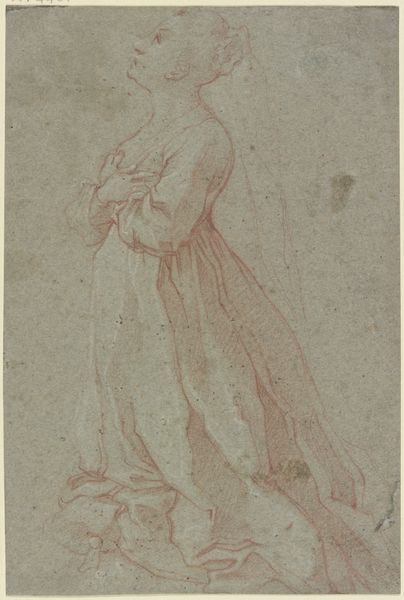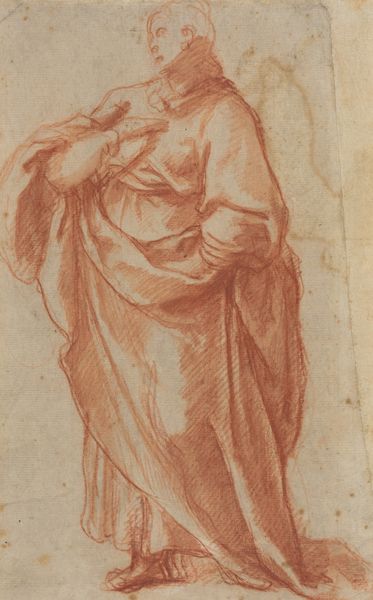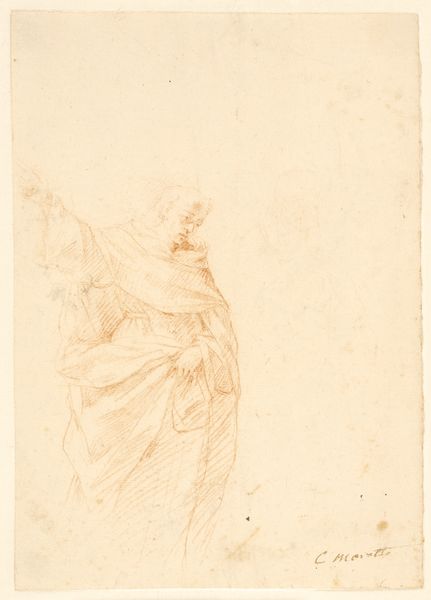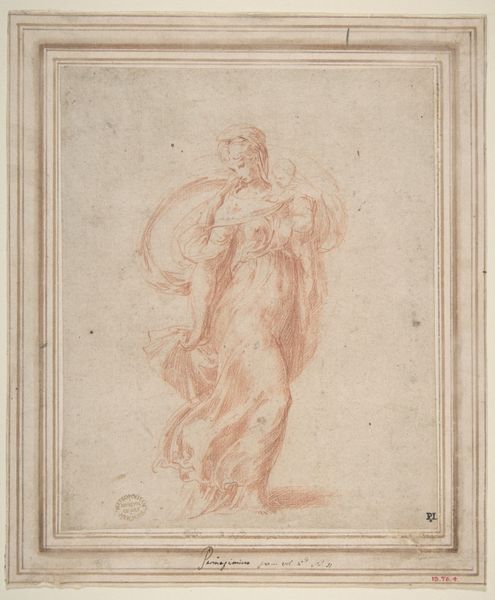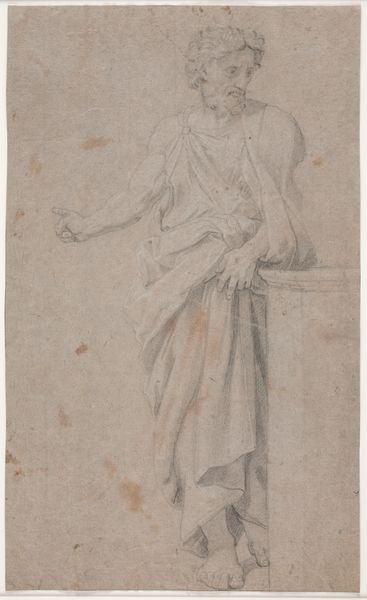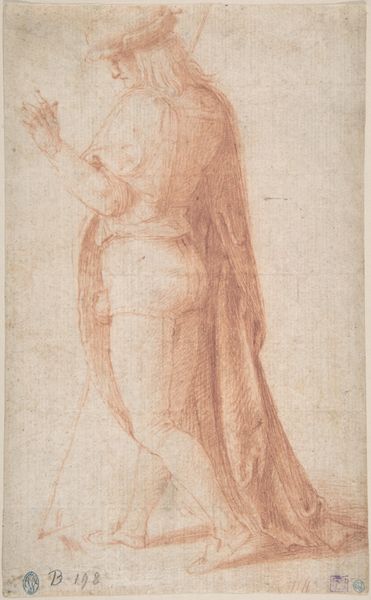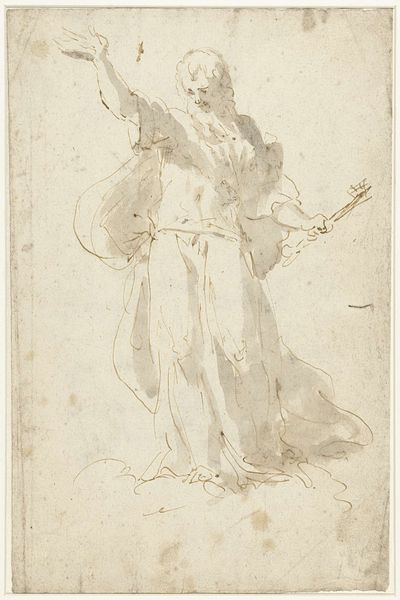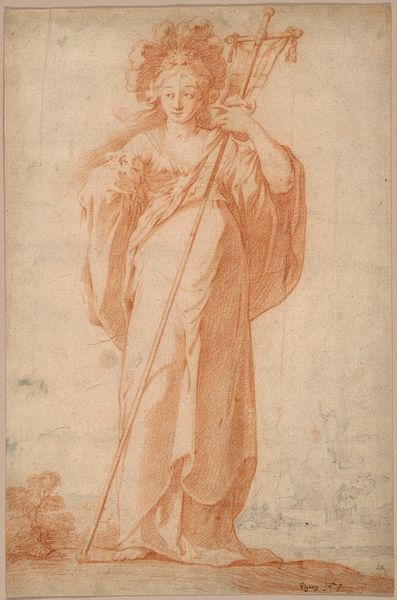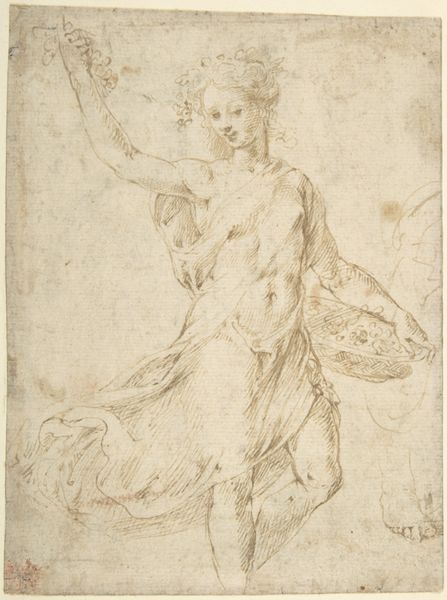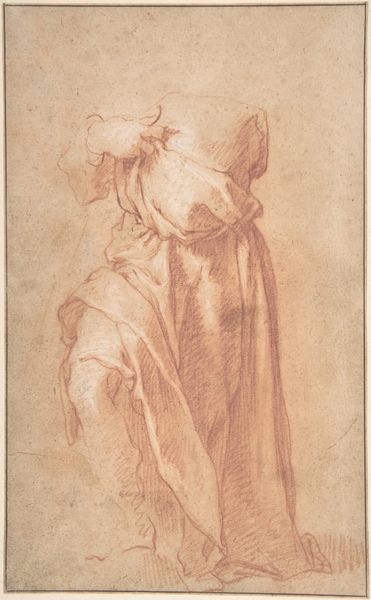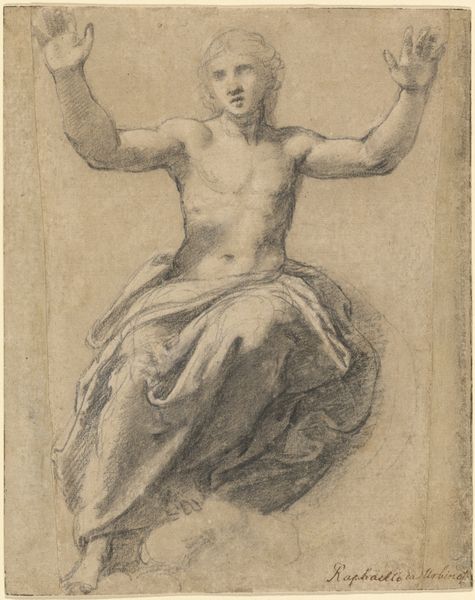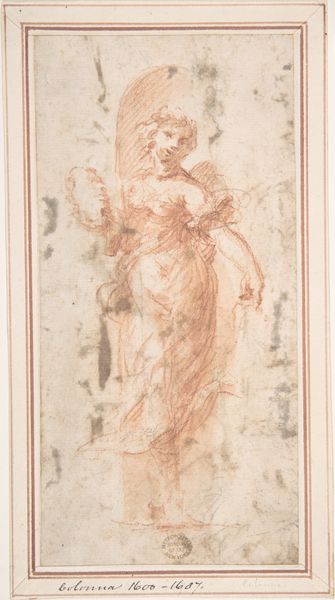
drawing, print, ink
#
drawing
#
baroque
# print
#
charcoal drawing
#
figuration
#
ink
#
history-painting
Dimensions: 10 1/2 × 7 5/8 in. (26.7 × 19.4 cm)
Copyright: Public Domain
Curator: "Assumption of the Virgin," a drawing by Guido Reni, dating back to sometime between 1575 and 1642. It’s currently part of the collection at the Metropolitan Museum of Art. What are your initial thoughts? Editor: There’s a delicate balance here; a tension between earthbound forms and upward movement. The figure levitates, almost as if caught mid-dance. The red chalk seems to emphasize a very earthly reality but doesn’t take away from the spiritual grace. Curator: Absolutely. Reni’s use of red chalk is quite striking when considering the process. It was a cost-effective medium and quick way to explore and define the figure’s form and drapery through a range of tonalities achieved by variations in pressure, and in turn was then sold in multiple copies to a large audience. It gives the whole composition an approachable yet refined feel, considering that the subject would often be translated as a glorious and heavenly apotheosis rendered in oil on large scale altarpieces or church cupolas. Editor: The dynamism inherent to the figure is created precisely through that very tactile materiality of the chalk and ink; note the economy of the strokes. I am immediately drawn to the lines. You could also easily track how this was composed; first, the broad outline and form, and the application of layering for greater detail and visual intensity. What's compelling is how the materiality allows the form to simultaneously cohere and dissipate, thus intensifying the transcendent quality of the subject. Curator: Considering the social and economic context of its creation, you might wonder about Reni's engagement with workshop production models to disseminate these drawings and prints that, while serving religious and devotional functions, also fueled commercial aspirations by the means of its reproduction and consumption, wouldn’t you agree? Editor: Agreed, the commercial success is quite palpable considering that devotional images and associated industry became ingrained as both spiritual and commercial practice, I guess. It's certainly a layered image with regards to production and circulation; each adds an extra layer of meaning. Thanks for bringing this fresh perspective! Curator: Of course, my pleasure to look at it with your structural interpretation!
Comments
No comments
Be the first to comment and join the conversation on the ultimate creative platform.


